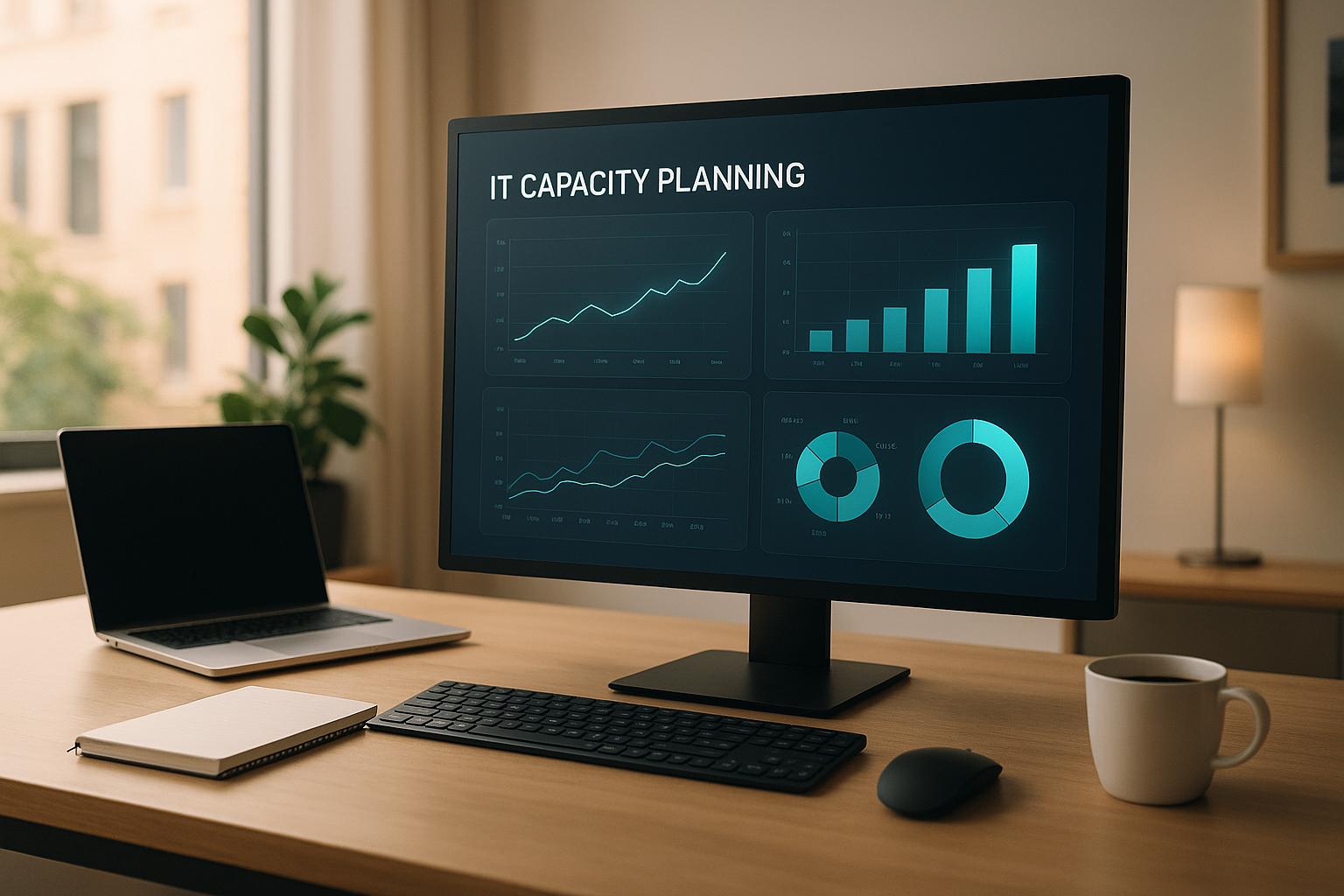AI tools are fast and scalable, while manual tracking offers deeper insight. Combining both methods gives businesses the best of both worlds: speed from AI and nuanced understanding from humans.
Quick Overview:
- AI Tools: Real-time data, large-scale analysis, higher upfront cost.
- Manual Tracking: Contextual understanding, slower process, limited scalability.
- Hybrid Approach: Use AI for data collection and humans for strategic interpretation.
| Aspect | AI Tools | Manual Tracking |
|---|---|---|
| Speed | Real-time analysis | Slower |
| Data Volume | Handles large datasets | Limited |
| Context | Basic patterns | Deeper insights |
| Cost | Higher upfront expense | Lower initial cost |
| Scalability | Easily scalable | Resource-intensive |
Key Insight: For optimal results, combine AI's efficiency with human expertise to track competitors and refine strategies effectively.
Related video from YouTube
Comparing AI Tools and Manual Tracking
When it comes to analyzing competitor engagement metrics, businesses often have to choose between AI-powered tools and traditional manual tracking methods. Both options have their strengths and weaknesses, which can influence their overall effectiveness.
Speed and Efficiency
AI tools stand out for their ability to process data across multiple platforms in real-time. For example, platforms like Sprout Social can instantly monitor and analyze competitor activities, making the process quick and efficient. On the other hand, manual tracking is much slower, requiring significant time and effort to gather and review data [1][3].
Understanding Subtlety and Context
Humans have the upper hand when it comes to recognizing tone, sarcasm, and cultural nuances - areas where AI often falls short [1][3]. For instance, during competitor social media analysis, manual tracking can differentiate between genuine customer satisfaction and sarcastic remarks. This ability to interpret subtle context provides a more accurate picture of competitor strategies and their effectiveness.
While this human insight is valuable, businesses must also consider the financial and logistical impacts of their chosen method.
Costs and Scalability
The cost-effectiveness of AI tools versus manual tracking largely depends on the size of the business and its data needs. Tools like Brand24 offer flexible pricing options that can scale with growing demands [3][4]. Manual tracking, while potentially cheaper at first, becomes less practical as data volume increases. Scaling up manual efforts often requires hiring more staff, which can drive up costs considerably.
In contrast, AI tools can handle larger datasets without requiring proportional cost increases, making them a better long-term solution for scalability. However, for small businesses with minimal data requirements, manual tracking might still be a more affordable short-term option.
Ultimately, many businesses find that a combination of AI tools and manual tracking strikes the right balance. This hybrid approach allows them to leverage the speed and efficiency of AI while still benefiting from the nuanced insights that only human analysis can provide.
Benefits of Using AI Tools for Engagement Tracking
AI tools have reshaped how businesses track competitor engagement, offering features that go beyond traditional manual methods. These tools are especially helpful for small and medium-sized enterprises (SMEs) looking to improve their competitive analysis.
Real-Time Insights
AI tools provide up-to-the-minute insights across various platforms, helping businesses make timely decisions. They can:
- Spot trends before they gain widespread attention
- Quickly react to shifts in competitor strategies
- Adjust marketing efforts based on immediate performance data
These tools not only save time but also manage the complexity of analyzing large datasets with ease.
Managing Large-Scale Data
One of the standout features of AI tools is their ability to process massive amounts of engagement data from multiple platforms. They uncover patterns and trends that manual methods simply can't match [3][4]. By monitoring platforms efficiently and generating automated reports, these tools help businesses scale their analysis efforts while maintaining precision.
Discovering Tools with AI for Businesses
For companies ready to integrate AI tools, AI for Businesses offers a curated directory designed for SMEs. This platform connects businesses with tools that enhance competitive intelligence while staying budget-friendly.
sbb-itb-bec6a7e
Strengths of Manual Tracking
AI tools are powerful for handling large datasets, but manual tracking offers distinct benefits that are crucial for thorough competitor analysis. Human analysts bring intuition and expertise that automated systems can't replicate, especially in areas requiring deeper understanding and flexibility.
Deeper Insight into Tone and Messaging
Humans are excellent at picking up on subtle cues in competitor communications. They can interpret tone, sarcasm, cultural references, and implied meanings - things AI often overlooks [1][3]. This skill is particularly useful when analyzing marketing strategies, where minor shifts in messaging could signal larger strategic changes.
Flexible Trend Analysis
Manual tracking allows analysts to approach data with creativity and adaptability. Unlike AI, which operates within its programmed parameters, human analysts can connect unrelated trends, consider external factors like seasonality, and quickly adjust to new developments without needing system updates [3][4].
This adaptability is especially useful in situations like:
- Complex markets with many variables
- PR crises or sudden market changes
- Discovering new opportunities, such as untapped audiences or changing customer behaviors
- Industry events that require specific context and understanding
Deciding Between AI Tools and Manual Tracking
Choosing between AI tools and manual tracking depends heavily on your business's specific needs, resources, and objectives. Interestingly, 61% of marketers believe AI plays a key role in staying competitive [3], but the decision isn't always as simple as it may seem.
Combining AI and Manual Methods
While we've previously explored the benefits of AI tools and manual tracking separately, combining the two often delivers better results. A hybrid approach uses AI for speed and efficiency while relying on human expertise for deeper insights. Here's how each contributes:
| Aspect | AI Tools Handle | Manual Analysis Adds |
|---|---|---|
| Data Collection | Real-time social media metrics | Context interpretation |
| Analysis Speed | Large-scale data processing | In-depth trend evaluation |
| Engagement Tracking | Automated performance metrics | Tone and cultural insights |
| Competitor Monitoring | 24/7 automated tracking | Strategic interpretation |
For instance, tools like Brand24 excel at continuous social listening, freeing up teams to focus on interpreting the data strategically [3]. This combination ensures critical information is captured while retaining the human touch.
Selecting the Right Tools for Your Needs
Once you've decided to blend AI and manual approaches, the next step is finding the right tools. Here are some key considerations:
- Scale of operations and budget: Platforms like Sprout Social and Hootsuite work well for businesses managing multiple social platforms. They offer scalable solutions that balance initial costs with long-term efficiency.
- Industry-specific needs: Certain industries demand tailored features, such as audience segmentation or benchmarking. For example, Quintly provides benchmarking tools that are especially useful for retail and e-commerce [2].
"AI tools automate data collection and provide actionable insights, such as identifying competitors' keywords, ad performance, or customer sentiment." - Panoramata [3]
For businesses exploring AI solutions, platforms like AI for Businesses offer curated options, including Stability.ai and Writesonic, tailored to specific tracking needs. Choosing the right tools allows companies to streamline competitor analysis and maintain their edge in the market.
Conclusion: Balancing AI and Manual Tracking
Tracking competitor engagement works best when combining the speed of AI with the intuition of human analysis. Each method brings its own strengths, and when used together, they create a solid framework for understanding competitor activity.
Key Takeaways
A blended approach taps into the strengths of both AI and manual tracking:
| Aspect | AI's Role | Human Input | Combined Outcome |
|---|---|---|---|
| Speed | Quick data collection | Focused analysis | Streamlined processes |
| Analysis | Data-based insights | Contextual understanding | Smarter strategies |
| Decision Making | Pattern recognition | Market expertise | Well-rounded decisions |
Tools like AI for Businesses make it easier to merge AI capabilities with manual efforts. They handle repetitive tasks like data collection, freeing analysts to dive into strategic insights.


